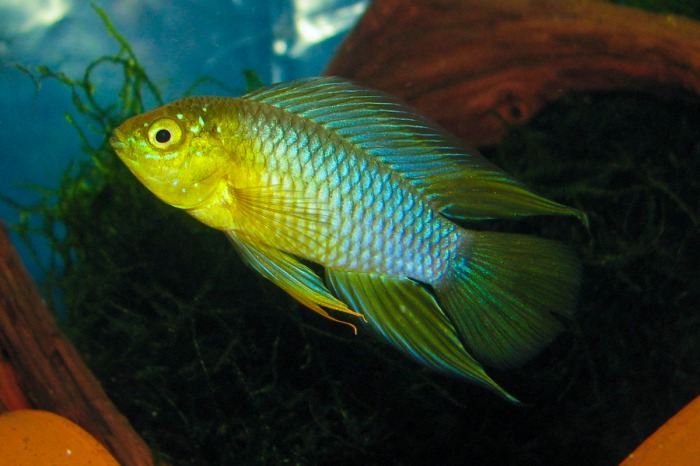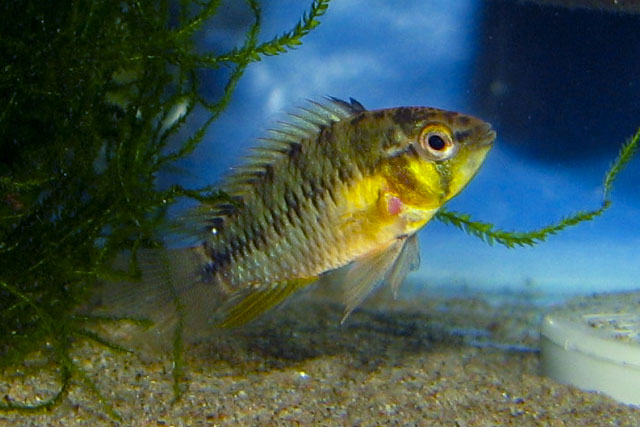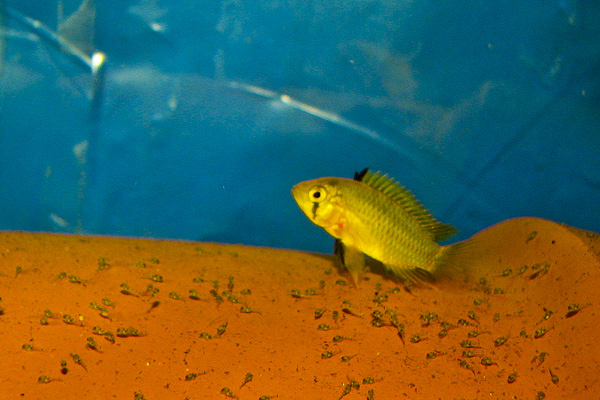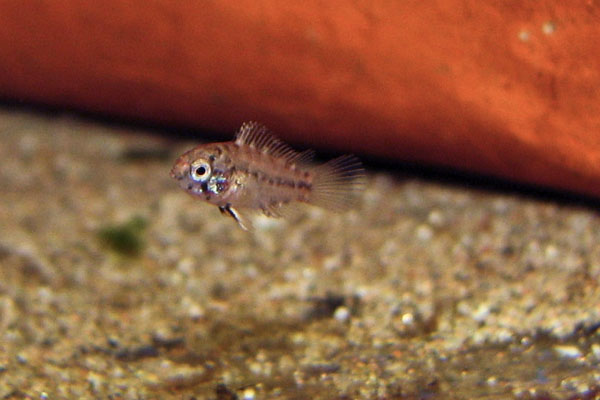Introduction

Apistogramma borellii is a small South American cichlid and a popular aquarium fish. It was described by British zoologist Charles Tate Regan in 1906 as Heterogramma borellii. It’s commonly known as the Umbrella cichlid. For many years the cockatoo dwarf cichlid A. cacatuoides was traded as A. borellii whilst A. borellii was incorrectly sold as A. reitzigi. This confusion lasted until Sven Kullander published a revision in 1983.
Etymology
Apistogramma is from apistos, Greek for uncertain, and gramme, a Greek feminine noun meaning line. The name refers to the variably developed lateral line. The specific name is in honour of a Dr A. Borelli.
Distribution & Availability
This species has a southerly distribution compared with others from the genus apistogramma. The type species was collected from the upper Rio Paraguay in the Brazilian state of Matto Grosso and it’s found in parts of Southern Brazil, Paraguay and Northern Argentina. It inhabits flood plains and wet savannahs.
Description
Males – a small cichlid even by apistogramma standards males rarely exceed 5cm SL. Typical laterally compressed apistogramma body shape with a rounded caudal fin and broad, tall dorsal. The colour is mainly pale blue with a yellow head and forepart. It is a variable species with some males having differing amounts of red lines around the head and different proportions of blue and yellow. Sometimes males with lots of red on their face are sold as “Opal”.
Females – smaller (4cm) than the male and less colourful. Turn a deep yellow colour when brooding.

Requirements
One of the easier apistos to keep and tolerates a fairly wide range of water conditions including quite low temperatures. Males will spar with each other but damage is rare. Can be kept in groups.
- Tank size: 60cm minimum
- Decoration: provide cover in the form of roots and plants. A sand substrate will allow the fish to grub around like they do in nature.
- Temperature: 20 – 26oC
- pH: 6.5 – 7.5
- Hardness: 1 – 10odH
Feeding
Will accept dried and frozen foods but live food is preferred. Twice weekly feds of grindal worms, daphnia and baby brine shrimp will keep the fish in top condition.
Breeding
This is perhaps the easiest of the apistos to breed. Keep a pair in a 60cm tank and provide some broken pots or tangled roots for the female to make her nesting chamber. The female in breeding condition will turn yellow and court the male. Eggs are laid in a nook or cave and at this time the female is very secretive.

After a week or so the female will appear with her brood of up to 200 young fry and lead them around the tank in search of food. A big bunch of Java moss will provide a place for the fry to graze and they can take microworm and newly hatched brine shrimp from the get go.
The male will guard the general area for a few days but thereafter loses interest. Remove him at this point. The female will continue to guard the fry for another week or two when she can also be removed.
The young fish may need to be culled regularly unless you have a lot of tank space but a bag of young apistos is easy to pass on at club meetings or auctions. The fry will grow at a reasonable rate and males will start to show colour at around 6 months when they should be about 3 – 4cm.

Summary
Apistogramma borellii is a beautiful dwarf cichlid that is not difficult to keep and breed. It is peaceful and does well in a community tank that is not too boisterous. It’s regularly offered for sale in shops and at auctions and isn’t expensive. All in all it’s a great little fish that every aquarist should aim to keep at least once.
References
- Fishbase species summary
- Baensch, H. A., Riehl, R.(1982): Aquarium Atlas – Amazon
- Horst Linke, Wolfgang Staeck: American Cichlids 1: Dwarf Cichlids – Amazon
very good report Graham thanks
John
LikeLike